The French coldwar Main Battle Tank
Designed at the same time that the German Leopard, the AMX-30 was France\'s attempt to provide its armoured forces with a potent second generation main battle tank, and the first French medium tank built since the late 1950s. The AMX-30 was a radical step forward of previous designs like the AMX-50/100. According to the doctrine which dictated the initial requirements, the technological advances in ammunitions rendered all standard protections obsolete. Therefore providing the adequate protection would have seriously hampered the mobility of any tank model. Instead, it was chosen to improve mobility and firepower, the protection being active, helped by a smaller and lower profile, fast-moving, making it a harder target to hit.
The AMX-30 "all or nothing" type armour shcheme.
Background
The AMX-30 could be traced back to the immediate postwar tank developments. The rushed ARL-44 was merely an up-gunned B1 in disguise, and the German Panther had some influences on the AMX-50 which also tried the concept of an oscillating turret. The most common French tank in the late 1950s was the AMX-13, the only worldwide mass-produced with this kind of turret. This model already traded protection for firepower and speed, for tactical reasons. When the AMX-50 project was eventually abandoned and US-built M47 Patton tanks were supplied instead. In 1955, the Batignolles-Châtillon 30 tons tank was unveiled and tested as a possible medium tank. In 1956, due to improving Franco-German relationships, there were concerns about a replacement for the M47 that could the needs of these countries, Italy, and NATO as a whole in Europe. The FINBEL (integrating Italy, The Luxemburg, Belgium and the Netherlands) military staff organization was extended into the FINABEL with both countries. The 27 October 1956 at Colomb-Béchar, a special bilateral agreement was reached. The "Europanzer" or "Europa-Panzer" project war born and refined by the Franco-German military research institute at Saint Louis. Original FINABEL 3A5 requirements as closed in 1957, asked for a 30 tons, 3.15 metres (10.3 ft) wide, 2.15 metres (7.1 ft) high, 105 mm armed model, with a 30 hp/ton ratio, and 350 kilometres (220 mi) range. Both countries agreed to built two prototypes each.However in 1958 the accession of De Gaulle to power and the choice to develop solely a nuclear capability, excluding Germany (and Italy) to avoid antagonizing USA and UK. But this led to a first setback as Germany began to loose interest in the common tank project. Eventually, the Germans eventually rejected the French proposition to use the French 105-millimetre (4.1 in) tank gun and choosed the British L7 for licence production instead, nailing the project\'s coffin for good. Eventually Italy left the project too. The French developed their own line of prototypes which led to the AMX-30, following a quite different path while West Germany developed the Leopard I for the Bundeswehr.

Development
The Atelier de Construction d\'Issy-les-Moulineaux (A.M.X.), under the direction of General Joseph Molinié (of the Direction des Études et Fabrications d\'Armements or DEFA), was charged of the project. Under head engineer Heissler supervision, the first prototype was completed in September 1960 and tested afterwards. The second was unveiled in July 1961 and tested a new rangefinder and tracks. Both had a well sloped hull and hemispheric turret reminiscent of the soviet models, and Sofam petrol engines. No less that seven other prototypes would test a sleeker cast turret design until 1963.Despite decision of De Gaulle to leave NATO and opposition by West-German defence minister Franz Josef Strauss to pursue the project, comparative trials were nevertheless held at Mailly-le-Camp, Meppen, Bourges and Satory, under the supervision of several OTAN members, and between five prototypes of each country, from August to October 1963. The results were confidential, however probably decisive in the decision of several of these countries to adopt the Leopard.
The French prototypes were light (only comparable to the Swiss Panzer 61), and very low (equal to the T-55). The turret design was conventional, the rejection of the oscillating design being dictated by NBC and fording tests, skirt and turret ring weaknesses and shot trap effect. The two first prototypes had a 720 hp (540 kW) SOFAM 12 GSds petrol engine. The later were equipped with a multi-fuel Hispano-Suiza diesel, according to the new NATO standard. The two last prototypes were were delivered in November 1965 as pre-production vehicles, with several modifications including the hull, turret casts, different gun mantlets. Later on the whole line of prototypes was re-designated AMX-30A and the production tanks AMX-30B.

Design
Hull & general characteristics
As built in June 1966 the production AMX-30B had a part-cast, part-welded hull with a pronounced front slope, which ended with a rounded beak. The sides were also sloped, and the rear engine deck was elevated, like on the Leopard. The turret was fully cast and had an oval, hemispheric shape, and the tank had a combat weight of 36 metric tons (40 short tons). For this weight, the protection was as follows : 50 millimetres (2.0 in) at the thickest, sloped at 70° (front plate), 23° sides, enough for 20-millimetre (0.79 in) IFVs AP projectiles. In direct fire the equivalents were 79 mm (3.1 in) for the front and 59 mm (2.3 in) for the hull forward sides and 30 mm (1.2 in) for the rear sides and rear plate. The Hull top/bottom was 15mm (0.59 in). The turret front was 80.8 mm (3.18 in) thick, and its side 41.5 mm (1.63 in), rear 50 mm (2.0 in) and only 20 mm (0.79 in) on top. The AMX-30 was the most lightly protected of any MBT in Europe for the time. The design philosophy indeed favoured entirely active protection given by the speed, agility and small dimensions. The amphibious sealing and NBC lining were completed by a slight overpressure and ventilation system.Armament
The unique feature of the AMX-30 was its monoblock steel 105-millimeter (4.1 in) F1 cannon completed by the Obus G (G fr "Gresse", literally "G shell"). It combined an outer shell and a suspended inner shell, divided by ball bearings, allowing the outer shell to spin while the inner one remains stationary. It was unlike fin-stabilized HEAT-round of the day, and more accurate, and this, independently of the range. Indeed the F1 was still rifled but had a practical range of 3000 m (3300 yards), and the 780g hexolite-filled warhead was capable to defeat 400 mm of armor equivalent (16 in) at this range. The gun was fitted with a 38 cm recoil brake, had a 40 cm course, and -8 +30 depression/elevation. It could fire also the OCC F1 M60 HE projectile, SCC F1 training warhead and OFUM PH-105 F1 smoke round. A total of 50 rounds were in store, some ready in the turret, others in the hull. There was also a coaxial 12.7 mm (0.5 in) M2 Browning machine gun in the mantlet, and a 7.62 mm (0.3 in) AA machine gun on the turret roof, respectively with 748 and 2080 rounds in store.
Turret
The commander cupola was given 10 all-around direct-vision episcopes, a binocular telescope with 10x magnification, and an optical full-field coincidence range finder. He also had a searchlight at the right-front of the cupola. The gunner had at his disposal a telescoping gun sight and two observation periscopes. The driver which sat on the left was given a hatch with three vision blocks. The pear-shaped section cast turret had a coincidence rangefinder and large storage areas defined by metallic handbars, with fastening straps which runs all along the turret until the rear basket. Radio equipment was stored in this area.Mobility
The powerplant was the Hispano-Suiza\'s HS-110 diesel engine, multi-fuel, 28.8 liters (1,760 cu in) in capacity, which produced 680 to 720 hp (540 KW) for a power-to-weight ratio of about 20 hp/ton. This engine could be replaced in the field in 45 minutes, and was able to give a 600 km range (370 miles), thanks to a 970 liters (260 U.S. gal) fuel tank capacity. Top speed of the production AMX-30B was 65 kph (40 mph), good performances for the day, although not astounding (63 kph for a Leopard I). The engine was served by a Gravina G.H.B.200C twin-plate centrifugal clutch coupled to a AMX 5-SD-200D, with five forward gears and five reverse gears, largely inspired by the German Panther gearbox. However this demanding gearbox was the source of many problems and was replaced in later production models (see issues). The drivetrain comprised rear adjustable drive sprockets, front idlers, five double reinforced aluminium roadwheels with rubber tyres, and five ruberrized return rollers per side. The suspensions was relatively complicated, counting torsion arms for each doubled roadwheels, and shock absorbers. There was two "bogies" with independent torsion arms per side, and one independent set at the rear. Shock absorbers/dampers were placed at the front and rear. The steel tracks with rubber shoes were 570 mm (22 in) wide. On trials, the AMX-30 showed it could ford 1.3 m to 2 m (4.2 to 6.5 fts) deep water obstacles without or with fast preparation, and up to 4 meters (13 feets) with a full preparation, which includes sealing the air louvres with blanking plates, installing the snorkel tube, and the infra-red driving equipment and searchlight.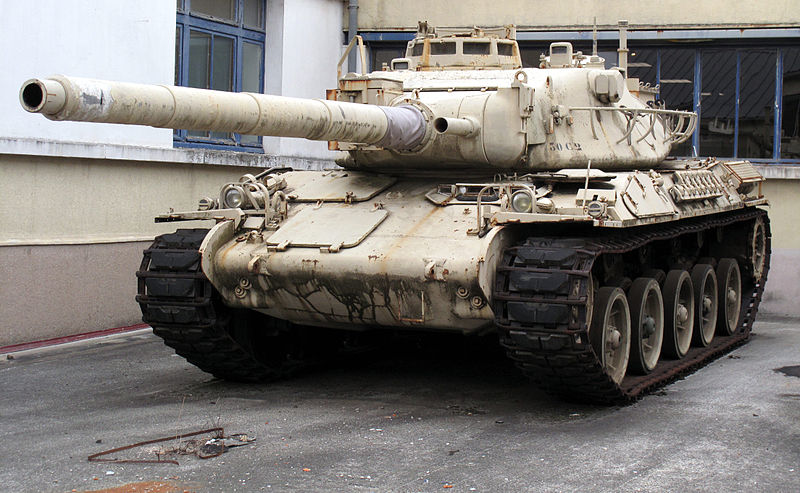
Production and evolution
Production took place at the Atelier de Construction de Roanne in Burgundy (south-eastern France), near Lyon. This industrial facility set up in 1952 had already some experience in producing 1900 AMX-13s. This was where took place the final assembly, form suppliers which were responsible of the powerplant (Atelier de Construction de Limoges), armoured hull (Ateliers et Forges de la Loire), turret (Atelier de Construction de Tarbes), main gun (Atelier de Construction de Bourges), machine-guns (Manufacture d\'Armes de Saint-Étienne), optics (Atelier de Construction de Puteaux) and many subcontractors (later all concentrated into the GIAT group). The initial order was of 300 vehicles, later 900 (1971) subdivided into eight batches, plus extra chassis for the variants. By 1966 the manufacturing rate was about ten tanks a month, then reached 20 and then 10 again in 1969. The last deliveries of this original order ceased in 1975. With the B2, production was launched again, culminating to 1171 vehicles in 1985. By 1989 the very last tanks were built for export (Cyprus) while 166 B2 had been delivered and 493 more converted, for a total of 1,355 accepted in French service. Added to this were 195 auF1 155 mm howitzer variants, 44 ATL Pluton launchers, 183 AMX-30R (Roland) SAMs, 134 AMX-30D ARVs, 48 EBG, and later in 1994, 20 GTCs. By then, the old AMX-30 was hopefully replaced by the Leclerc, 3rd gen. MBT. The remainder were built for export (see later).
Issues and limitations
The AMX-30B was not without serious issues : The major one was the transmission, which development dated back from 1938. It needed good training and careful handling, proved difficult to maintain, and was reputed unreliable. For example, the driver had to manually change gears at specific times, and this was especially difficult when moving over rough terrain. This proved also a brake to export, until these issue was solved in the 1980s. The protection was not improved since 1965, and barely compensated by the top speed. Late 1970s tanks like the American M1 Abrams, or the Soviet T-64, both turbine-propelled, were much faster while having a far better protection. Comparatively the Leopard I, also lightly armoured at the beginning, was up-armored in later versions, almost doubling its protection value. To have another clue of its battlefield survivability, ten countries operated this model, and only one retained these tanks in active service, versus 30+ for the Leopard I, many of which still retained them frontline, like Greece (which replaced its AMX-30 by this model). It was considered at risks against the T-62 and T-72.
1st modernization phase (1972-1973)
In 1972, the gun stabilization system was modernized, and in 1973, the coaxial heavy MG was replaced by a 20 mm (0.8 in), dual-purpose fast autocannon. Built by Hispano-Suiza, which also produced aircraft cannons, it could depress to -8 but elevate to 40° which made it a potent weapon against low-flying attack helicopters. The same year, a research program began to provide a more thorough modernization under the name of AMX-30 Valorisé (meaning "upgraded"). In 1979 this program was concluded into a new production run as well as well as a major modernization campaign. Non-modernized vehicles were made available for export.The AMX-30B2 (1980)
This was the major upgrade of the serie, inaugurated by the first production models in january 1982. It included a much improved fire control system and most important, a new transmission. The COTAC APX M-508 FCS received a laser rangefinder and a low-light televisor (LLTV). Ammunitions comprised now the APFSDS round, and the engine was upgraded to the more powerful HS-110.2. The transmission was now a SESM ENC200 with a torque converter for smoother rides. New new torsion bars and shocks absorbers with a longer course were also adopted. By 1998, a further upgrade was applied to 500 tanks, which received new Renault Mack E9 750 hp engines, far more powerful and more fuel-efficient.The BRENUS (1995)
This ultimate upgrade was a "kit" developed by GIAT and deployed permanently only to the 1er/ 2e Chasseurs vehicles (of the Rapid reaction Force), while it was made available for a quick conversion of the 2e/5e Dragons tanks if needed. "Brennus" was an acronym for this protection called in French briques réactives de surblindage ("up-armor reactive bricks") was also the name of a famous Gallic chieftain of the IVth century BC which defeated the Romans on the river Allia and sacked Rome. This ERA set comprised 112 G2 bricks installed on the turret and hull front. To compensate for the additional weight (1.7 metric tons or 1.9 short tons), a new 725 hp capable HS engine was installed. This protection gave the equivalent of 400 mm (16 in) on a 60° slope. The latest experiments on the AMX-30, in the 2000s, was to try stealth technologies, with the Démonstrateur Furtif à Chenille, fitted with a newly-shaped turret coated with radar-absorbent material, but also reworked air cooling, redrawn hull surfaces and various tests of numeric and visual camouflage.Variants
The AMX-30 chassis was declined into a large variety of armoured vehicles which some are still in service today, prototypes and special versions.The "basic AMX-30"
This export version could be compared to the soviet "Monkey" T-72. The infra-red searchlight is suppressed, as well as the pressurized air filtering, the periscopes are day-only capable, and a specifically simplified commander\'s cupola was developed. A 7.62 mm machine gun replaced the coaxial 20 mm autocannon.
The AMX-30 ACRA
A bit like the US-built Sheridan, a special version was developed in 1966-1967 with a 142 mm (5.6 in) tank gun able to fire the supersonic missiles of the ACRA Anti-Char Rapide Autopropulsé anti-tank guided missile type, as well as same caliber HE rounds for support. The turret was enlarged also to allow bigger guns (like a 120 mm smoothbore) to fit in. However, due to the cost of the missile program, it was abandoned in 1970.The AMX-32
This modernized export variant was first presented in june 1979 (Satory exhibition). It was based on the B2 but equipped with spaced armour and extended protection features against ATGMs. The 20 mm coaxial autocannon was a standard, as well as a dual purpose 7.9 mm roof machine-gun. No orders were placed for this version.
The canon automoteur de 155 GCT
The most common variant is the self-propelled artillery version, AuF1. The "GTC" stands for Grande Cadence de Tir, fast rate of fire. A fully-traversible turret house the 155 mm (6.1 in) 40 cal. howitzer have an autoloader for a 8 rounds per minute fire at a top range of 30 km (19 mi), extended with the LU211 round. The maximum range is obtained thanks to a 66 degrees elevation. 42 rounds of ammunition are carried, with combustible cartridge cases. The program was started in 1969, seven prototypes were built in 1979, then 6 pre-production vehicles, for a total of 190 SPGs.The AMX-30 DCA SPAAG
This program was started in 1969, both for national needs and the export market. The system was intended against low-altitude attacks and comprised a tailored turret S401 A (previously tested on the AMX-13) with two independent Hispano-Suiza 831A 30 mm fast autocannons, coupled with the Oeil Noir ("Black Eye") fire control system and a Doppler radar exploited by an analogue computer. The radar could be folded and protected by an armoured box when not in use. The guns were provided with 1,200 rounds, and fired by 5 or 15-round bursts depending on the selected mode, for a 650 rounds per minute rate of fire. The radar however worked on visual tracking and was not efficient in bad weather. For this reasons and the program cost, the French Army declined any purchase, but a contract was awarded later to Saudi Arabia in 1975.The AMX-30SA SAM
Developed by Thomson-CSF from the SPAAG version and the AMX-30R chassis, this surface-to-air missile system version was only built for Saudi Arabia apparently in 1975. It comprised two SA-10 Shahine launchers around a modified turret, and relatively similar equipments.
The AMX-30 Roland SAM
This French surface-to-air missile system was developed around a 16 km (9.9 mi) range radar and a small remote-operated turret equipped with two missile launcher tubes. The operators are situated in the front compartment while the rear one housed a reserve of 8 missile, with an automatic loader. 183 vehicle were produced in all, starting with an order in 1977.The AMX-30 TEL Pluton
The standard Tactical Missile Launcher (Tranporter Erector Launcher) of the French Army was developed in 1980 to fire the nuclear-capable (120 kt) Short-range (120 km) ballistic missile system called Pluton ("Pluto"). It was conceived originally to operates in Western Germany against advancing soviet forces. 100 were built but only 70 were retained in operations, the remainder being placed in reserve in case of emergency. They were deployed into five regiments based in the North-west of France, 6-TEL strong each. These vehicles were phased out in 1993 in favor of the long range HADES missile launchers.The AMX-30D ARV
The "D" stands for "Dépanneur Niveleur" and was the dozer/ARV version. A total of 105 of these Armoured Recovery Vehicle was ordered in 1972, entering service in 1973 (pre-production) for a full production in 1975. It was equipped with a main winch of 35 tons capacity, an auxiliary winch of 20 tons capacity, a crane with 10 tons lifting power. A spare power pack was carried for replacement on the battlefield, and a front dozer blade for digging scrapes, as well as anchoring the vehicle in operations.The AMX-30H AVLB Bridgelayer
A scissor-bridge system with a 20 m overall span (22 yd) with a weight capacity of 46 tons, and 3.1 m width which could be extended to 3.95 m (4.32 yd) thanks to appliqué panels. The program was started in 1963, with a first prototype in 1967. A pre-production prototype H was built in 1968, and tested in 1971. But no orders were placed. Only Saudi Arabia ordered 12 vehicles.
The AMX-30EBG
The EBG combat engineer tractor had a launching tube for demolition charges, four anti-tank mine launching tubes, a dozer blade, a 20-ton cap. Winch, and an hydraulic arm for lifting obstacles with pincers or auger. It was served by a three man crew (commander, sapper and driver).The AMX-30EBD Demin
This armoured minesweeper is converted with a front Russian kit mine plough/rollers, supplied by Germany from an old East German stock. 6 of these vehicles were used once during the 1st gulf war operations. When operating the turret is turned backwards. "Demin" stands for déminage (minesweeping).Exports
One of the first customers of the AMX-30 would have been Israel, which already bought gun packages and AMX-13s, but the negociation failed when the British Government eventually agreed to let Israel built under licence the Chieftain in 1966. Both Belgium and the Netherland declined the type, choosing the Leopard I instead. However the AMX-30 was exported to less affluent countries, and dictatures at the time (Germany was forbidden by constitution to sell tanks to autocratic regimes).Bosnia
The local army received 32 AMX-30s, second-hand from UAE in the 1990s, after the war.Chile
Due to growing tensions with Argentina, Chile place an order for 46 tanks, but the delivery was cut short to 21 when the French government applied its veto.Cyprus
By the early 1990s, Greek AMX-30s were phased out and 90 transferred to the Cypriot National Guard. 12 more were obtained later, as well as 52 B2s in the early 2000s. They are still frontline today.Greece
By 1969 the Greek military junta entered negotiations to acquire the French tank, concluded by a purchase of 190 AMX-30Bs, plus 14 AMX-30Ds. They were phased out in the 1990s.Qatar
By a 1977 agreement, 24 AMX-30B, were purchased, and then 30 B2s in 1987. Their replacement by the Leopard 2 is under way.Saudi Arabia
Through the "Palmier contract" in 1973, the UAE acquired 190 AMX-30S. The S versions were simplified and adapted for desert combat. Later one, under the same contract, 59 MX-30Ds, 12 Ps, and 51 SPGs were obtained, and in 1979, the 52 SPAAG (SA) versions and 50 AMX-30C1 Shanine-2s SAMs. The last were delivered in 1989. In 1977, 64 AMX-30 and one ARV were purchased also to form a complete brigade. However the AMX-30S fleet was placed into reserve gradually in the 2000s or sold, and 45 are now deactivated and in storage.
Spain
Spain considered purchasing or producing locally the Leopard I but due to the ban on 105 mm L7 gun from Britain and then proposal from France to allow building the AMX-30 under licence, a deal was concluded in 1970 for 19 tanks and provisions for a local assembly of 180 more. A second batch was ordered in 1977, for a total of 299 AMX-30Es, as well as 10 AMX-30Ds and 18 AMX-30Rs. However in 1987, a six-year modernization program saw the the fleet upgraded to the EM1/EM2 standard. This included a complete renewal of the indicators, brakes, on-board electronics, a new engine and gearbox, a new kinetic energy penetrator, and a modernized FCS. however their active service was cut short by their replacement by M60A3s, and B1 Centauro wheeled tanks in the late 1990s and 2000s.Tunisia
The Tunisian Armored Forces acquired an unknown number of ex-Saudi AMX-30Ss in the 1990s.Venezuela
In 1972 this country placed an order for 142, then reduced to 82 AMX-30Vs, and four AMX-30D. By the mid-1980s they were taken in hands for upgrade, with the adoption of a Continental AVDS-1790-5A diesel engine producing 908 hp (677 kW), coupled to an Allison CD-850-6A transmission. New fuel tank was adopted for an extended range of 720 kilometers (450 mi) and the FCS was upgraded to a Lansadot MkI assisted by an Elbit Systems Ballistic computer. Their actual status is unknown.
Active service
The French Army first unit to receive the new tank was the 501st Régiment de Chars de Combat (RCC) in august 1966. By the fall of the 1990s, the 501st and 503rd tank regiments were the first to shift from the B2 to the new Leclerc, followed by the 6th and 12th Cuirassier Regiments. Apart some minor peace-keeping operations in Africa and Bosnia, the French AMX-30s saw action within the light "Division Daguet" (the 6e Division Légère Blindée), which operated from the extreme left (west) of the coalition forces at the eve of the ground assault on Iraq - Operation desert Storm, in 1991. This fast force was to provide a cover to the left flank of the XVIII Airborne Corps and was relatively autonomous. This force comprised light wheeled AMX-10RCs of the cavalry reconnaissance regiments, reinforced by a heavy armoured unit, the 4e Régiment de Dragons with 44 AMX-30B2s divided into three 13-tanks strong squadrons, one command and six tanks in reserve. Six older AMX-30s were equipped with ex-soviet minerollers ("Demin"). They all succeeded to take their objectives, "Rochambeau" (against the iraqi 45th Infantry Division), "Chambord" (ten tanks kills and many other vehicles reported destroyed) assisted by A-10s, and eventually the As-Salman air base ("Objective White"). This force reported no casualty and fired some 270 gun rounds.Only one of the Greek tanks saw action, during the 1973 Athens Polytechnic uprising. It is now preserved at the Greek Army Armour training center. The Qatari AMX-30s were blooded at the Battle of Khafji on 30 January 1991, knocking out or capturing several T-55, why one AMX-30 was lost. The Saudi Arabian AMX-30s were apparently not used in combat as it was feared that encounters with the superior Iraqi T-72s would turn to its disavantage.
Links
The AMX-30 on wikipediaOn military-today
On chars-francais.net
On army-recoignition.net
AMX-30 specifications (1973) |
|
| Dimensions (l-w-h): | 6.15 oa x 2.42 x 2.24 m (20.2 x 7.1 x 7.4 in) |
| Total weight, battle ready: | 36 Tons (26000 ibs) |
| Crew : | 4 (Drivers, Commander, gunner, loader) |
| Propulsion: | Hispano-Suiza HS, 12-cylinder flat water-cooled 680-720 hp |
| Suspensions: | Torsion arms & shock absorbers |
| Top Speed | 65 kph(40 mph) |
| Range (road)/Fuel consumption | 650 km (250 mi) for 380L - 50L/100 |
| Armament (see notes) | 105 mm F1 with 56 rounds (2 in) 20 mm HS dual autocannon with 480 rounds (0.8 in) 1 x 7.62 mm LMG (0.3 in) 4500 rounds |
| Armour | Hull nose and turret mantlet 50 mm, sides 30, bottom 15, rooftop 15 mm |
| Total Production | 3571 |
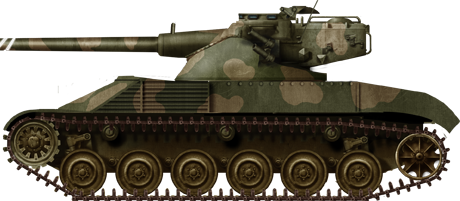
The two 25 ton Batignolles-Châtillon medium tanks (1958) were early precursors of the AMX-30, testing the oscillating turret for a 105 mm main gun.

AMX-30A prototype, 1964.

Early production vehicle of the 501st RCC (tank regiment) in manoeuvers, 1966.

Modified AMX-30B of the 12th Cuirassier Regiment with side skirts in exercises, 1970s.

Camouflaged AMX-30B2 "Domjevin", 1985.

AMX-30B2 with side skirts "Ivan le Fou", 1990s.

French AMX-30B2 of the 4th Dragoons in the Iraqi desert (Division Daguet), Operation desert Storm, 1991.

AMX-30B2 "BRENUS" ERA 1995.

French FORAD (FORce ADverse) AMX-30B2 tactical training tanks in the 1990s. Outwardly they differ from regular B2 series by missing bustle storage and NBC bin, AANF1 LMG and mounting, fake smoke evacuator, disguised IR light, T-72 fake skirts, modified rear plate with 2 cans (often missing during exercises), fake snorkel, ammo crates of French 20 mm. The ground direct support phone was dismantled and supports of fuel feeders. Sometimes a wet feeder is mounted between the two cans. The grey livery was standard.

Spanish AMX-30EM2, 1990s.

AMX-30B of the Cypriot National Guard.

Chilean AMX-30B2, 1990s.

Venezuelian AMX-30V, 2000s. This version was completely re-engineered and the engine compartement and chassis were lenghened.

French canon automoteur de 155 mm GTC, 1980s.
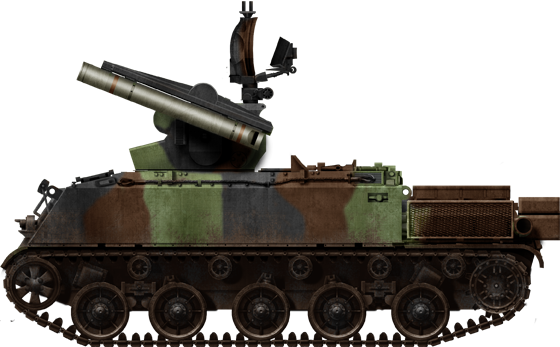
AMX Roland SAM

Pluton TME (Tactical Missile Erector) in 1985.
AMX-30 Gallery





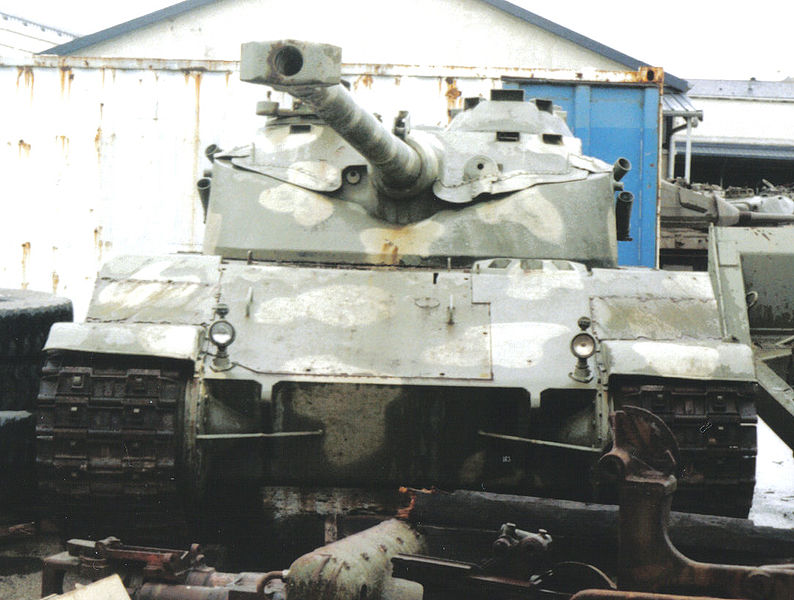






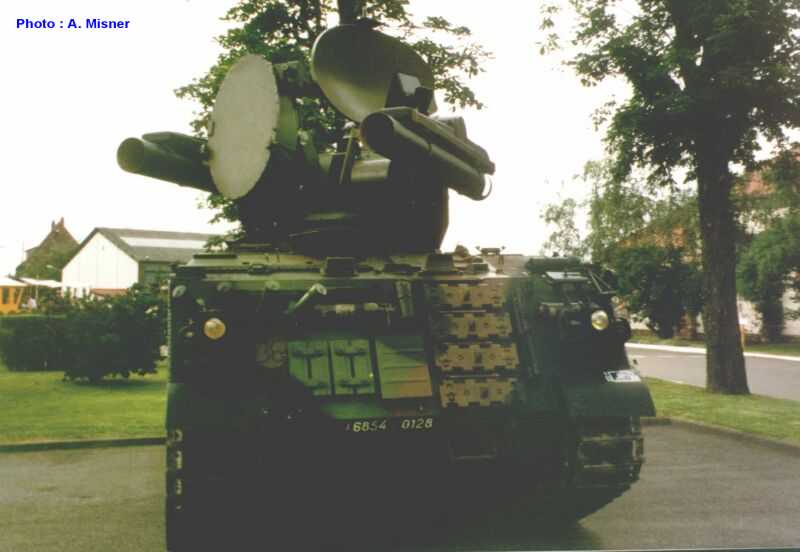
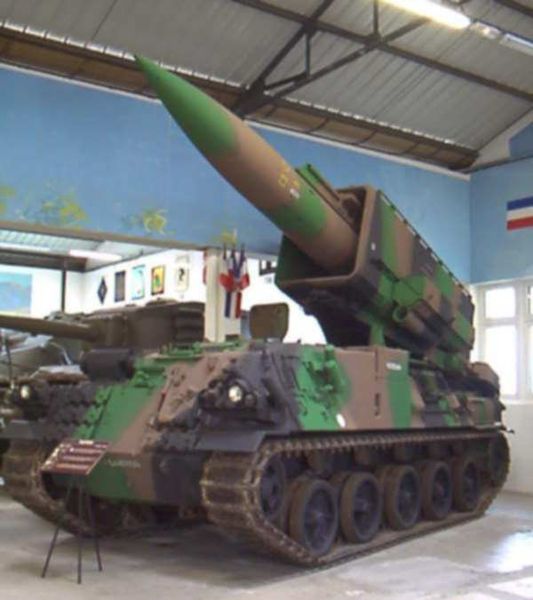
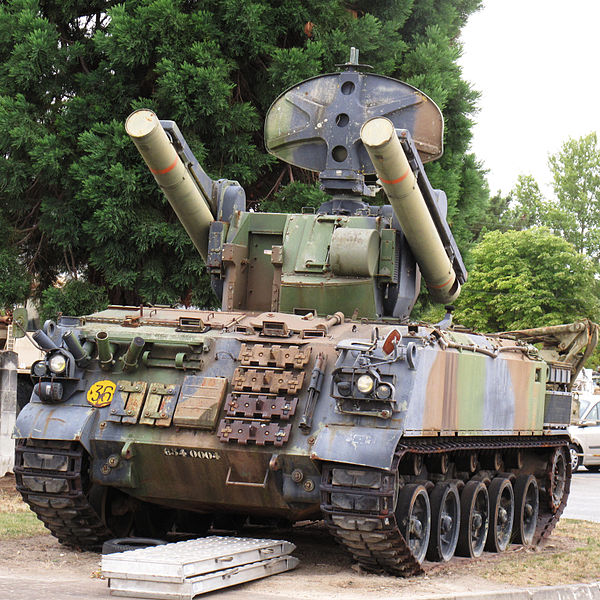



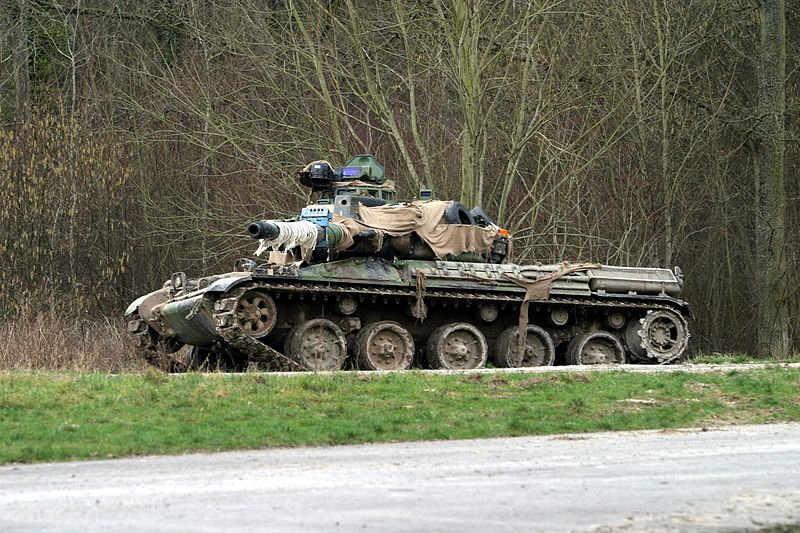
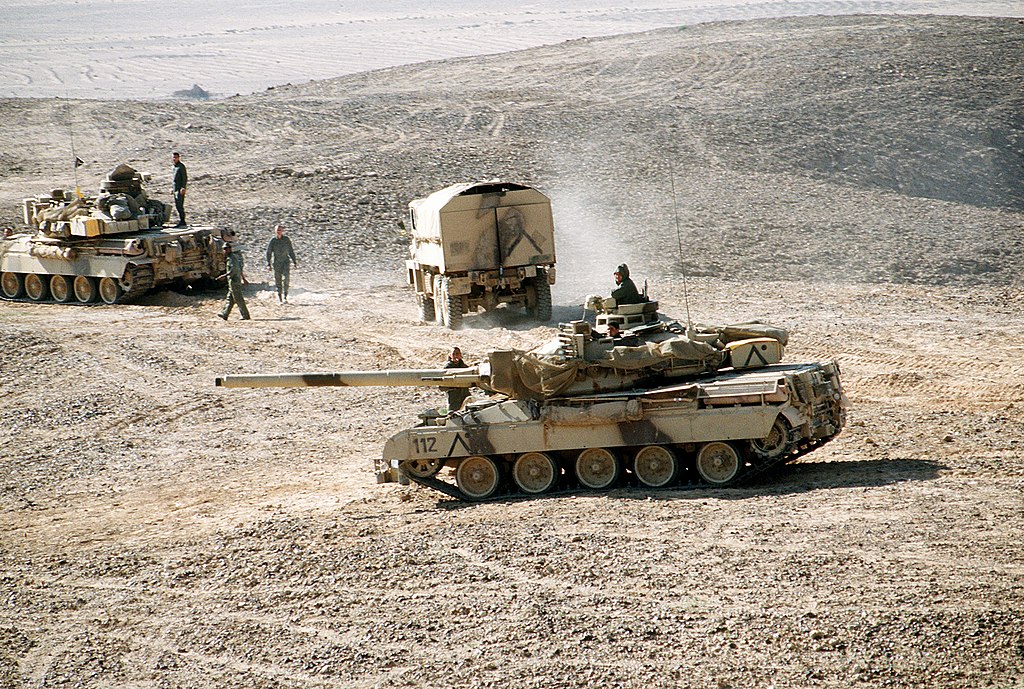






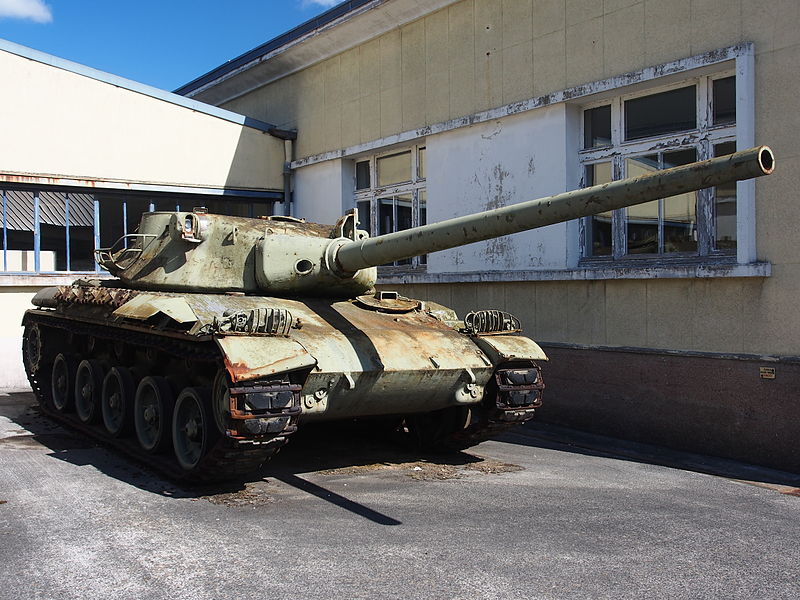
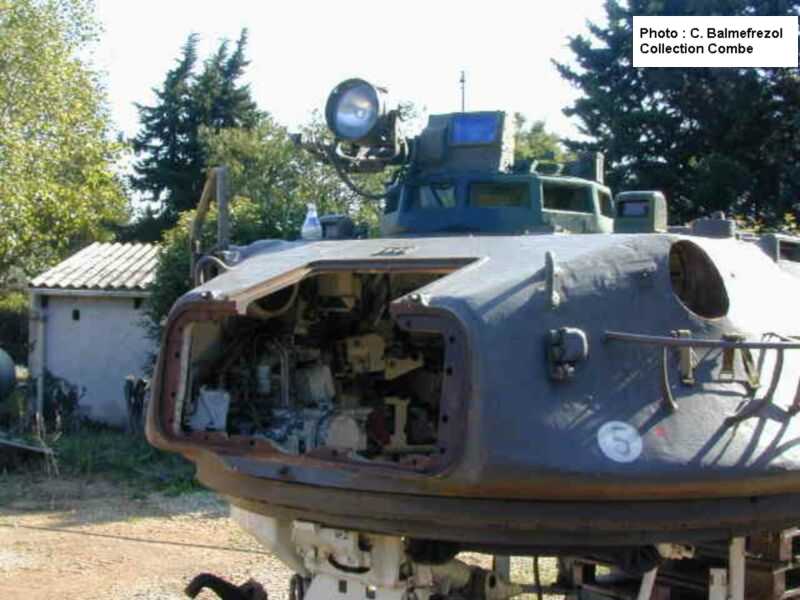
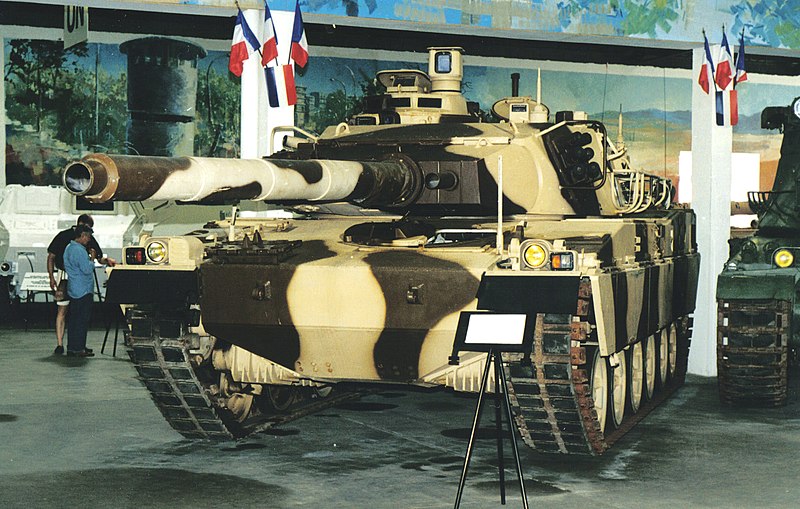

Cold War Tanks


































Cold war tanks posters

Cold War Main Battle Tanks

Cold War Soviet Army
Museums, Movies, Books & Games
The Tanks and Armor in pop culture
Tanks and armored vehicles in general are only really grasped when seen first person: The mass, the scale, it's all there. Explore also the way tanks were covered in the movie industry, in books and in video games.Movies:
Best tanks movie on warhistoryonline.com
On imdb.com
On bestsimilar.com/
miltours.com
liveabout.com/
watchmojo.com
Video Games:
pcgamesn.com
historyhit.com
levvvel.com
vg247.com/best-tank-games
mmobomb.com/
alienwarearena.com

